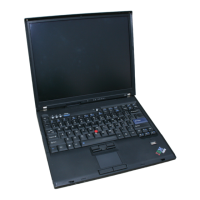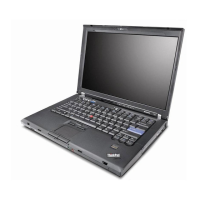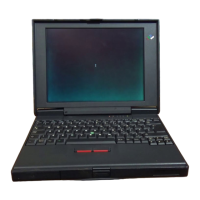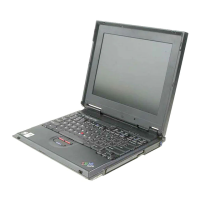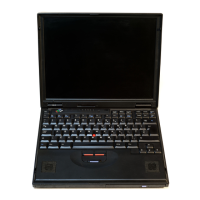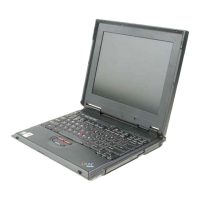c
(
(
(
Signal lines from the tape control card
that
generate
status are:
'-End
of
Tape' (EOT)-Indicates that the end
of
tape
hole was sensed. EDT status is held
in
the 'EDT
error stop' latch on the base
I/O
card. The tape
cannot move until this latch is reset because this
latch blocks the run command. (EDT also blocks the
run command on the tape control card.)
'-Beginning
of
Tape' (BOT)-Indicates that the
beginning
of
tape hole was sensed.
'-Select Mag Active'-Indicates that either the forward
or reverse select magnet coil is conducting current.
'-Cartridge
in Place'-Indicates the presence
of
cartridge
in
the tape unit.
'-Erase Inactive'
-When
down, indicates that neither
channel 0 nor channel 1 erase coil is erasing.
If
either
erase coil is erasing, this line
is
up.
'-LED
and
Erase OK'-Indicates that the
EOT
and BOT
LEDs
are conducting and that the erase coils do not
have
an
open circuit.
If
either erase coil has
an
open
circuit during
an
erase operation
or
either
LED
has
an
open circuit anytime, this line is up.
, + File Protect'
-I
ndicates the position
of
the file
protect
window
in the cartridge. This line must be
down before write instructions are initiated.
Interrupts
The tape adapter generates interrupts
to
the controller
on the 'interrupt request 2' line when reading
information
from
or writing information
to
the tape unit.
Interrupts tell the controller that the tape adapter needs
it
to
process the tape data. The controller executes
microinstructions in
ROS
to
operate the tape unit.
When reading, the interrupt frequency depends upon
whether the tape adapter is programmed
for
bit
mode or
byte mode. The mode is controlled by the microprogram
with a put microinstruction and bus
out
bit 2 = 1 (for
bit
mode), or bus out
bit
2 = 0 (for byte mode). In
bit
mode, the interrupt occurs after each bit is read (every
31.25I's).
In byte mode, the interrupt occurs after 8
bits are read (every 2501's).
Byte mode is used after synchronization is established
because this mode causes fewer interrupts
to
the
controller. The controller operates more effectively
if
it
has fewer interrupts
to
process.
When writing, the interrupts occur every 31.25
I's
to
signal the controller that the tape adapter sent one data
bit
to
the tape control card and the tape adapter is
now
ready
for
another bit.
Data
and
Clocks
Data is read from the tape one bit at a time. The tape
control card detects the flux reversal on the tape and
generates 'read data' and 'read clock' signals. The 'read
clock' signal indicates when
the'
read data' signal is
valid. 'Read clock' is a 265±50 ns pulse.
The 'read clock' signal gates the 'read data' signal into
the
RDDR
(read data deserializer register) in the tape
adapter (refer
to
the Base
I/O
Card logic diagrams). In
bit mode,
an
interrupt is generated after 1
bit
is stored
in the
RDDR.
In byte mode, the interrupt is generated
after 8 bits are collected
in
the
RDDR.
After
the interrupt is detected, the controller gets data
from the tape adapter on the bus in lines 1 bit at a time
in
bit mode
or
1 byte at a time in byte mode.
The controller sends data
to
the tape adapter 1 bit at a
time. Information from the tape adapter plus clock bits
are written on the tape each time the
'write
data' line
changes.
A clock on the tape adapter synchronizes data and clock
pulses.
Tape 4-43

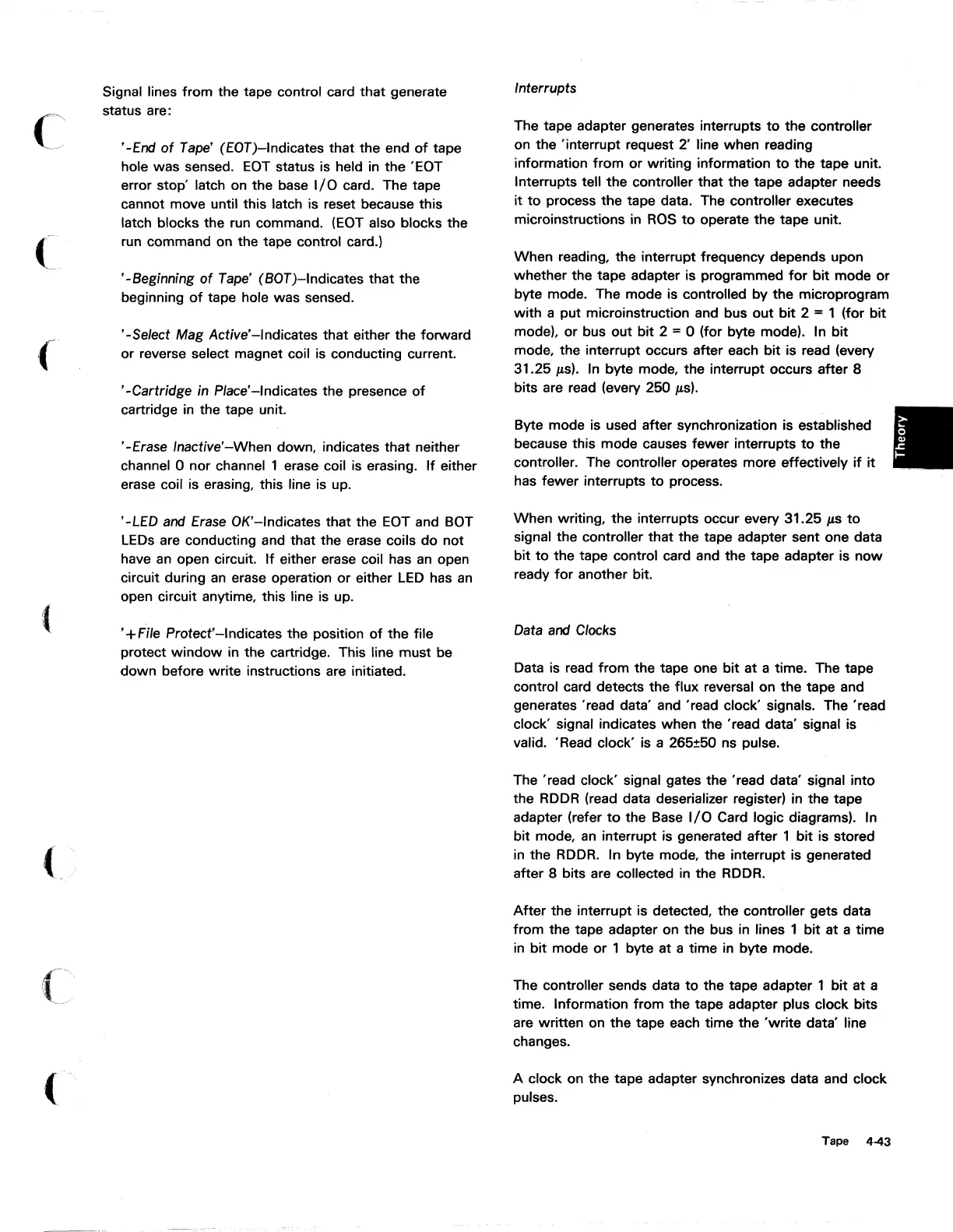